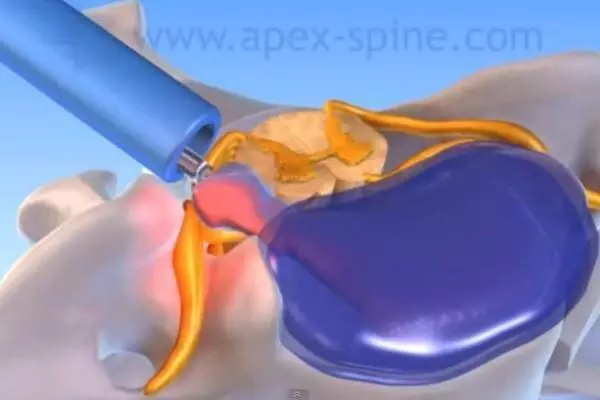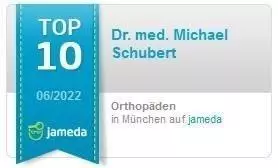Microforaminotomy
...on the cervical spine.
Under certain circumstances, dorsal cervical microforaminotomy can be an option to repair a herniated disc in the cervical spine area without the need for implantation of a disc prosthesis or fusion surgery. This is the case, for example, when the herniated disc tissue emerges laterally or when the narrowing of the nerve exit hole is limited to one side. Cervical microforaminotomy is an established treatment method that has been used in its classic form since the 1950s. If necessary, the procedure can also be used to surgically treat two heights in one treatment step.
dr Helmbrecht performs this procedure using a minimally invasive technique from the back (= dorsal). Compared to the classic ventral discectomy (with subsequent stiffening), which is carried out from the front, this procedure has the advantage that no negative effects on the mobility and stability of the operated movement segment are to be expected. Incidentally, that of Dr. Helmbrecht modified access - compared to a skin incision of up to four centimeters in the classic variant - only a small skin incision of about one centimeter is necessary, which means that the healing process is faster overall and the affected person can resume his usual activities more quickly.
How does a treatment work?
In a prone or sitting position, a trocar is inserted under general anesthesia percutaneously through a small skin incision of about one centimeter. With the help of a microscope, if necessary also an endoscope, the intervertebral disc tissue that has come out is removed under visual control with micro-instruments and the compressed nerve root is thus exposed again. As a result, the pain is usually significantly reduced almost immediately.
You can leave the clinic two to three days after the operation. A medical check-up takes place two weeks after the day of the operation.
What aftercare is required?
About a week after the operation, it is advisable to start physiotherapy tailored to your individual needs under the supervision of a physiotherapist.
When can you do sports again?
You should be able to swim or cycle regularly again about three weeks after the procedure. You can gradually resume your usual sporting training about six weeks after the procedure.
When are you able to work again?
After three weeks you can resume office work and light physical work. You should avoid heavy physical activity for the first eight weeks and then slowly increase it.
What is the success rate?
The international literature reports success rates of over 80 percent.
The advantages at a glance:
- With the dorsal cervical microforaminotomy, the stability and mobility of the cervical vertebrae are preserved; If the indication is adequate, the procedure is therefore a gentle alternative to the implantation of a disc prosthesis or to a stiffening operation.
- Thanks to the minimally invasive technique, the convalescence phase is significantly shorter than with the classic procedure.
- You can go back to your usual activities just three weeks after the operation.
- A low complication rate.
- A high success rate.


